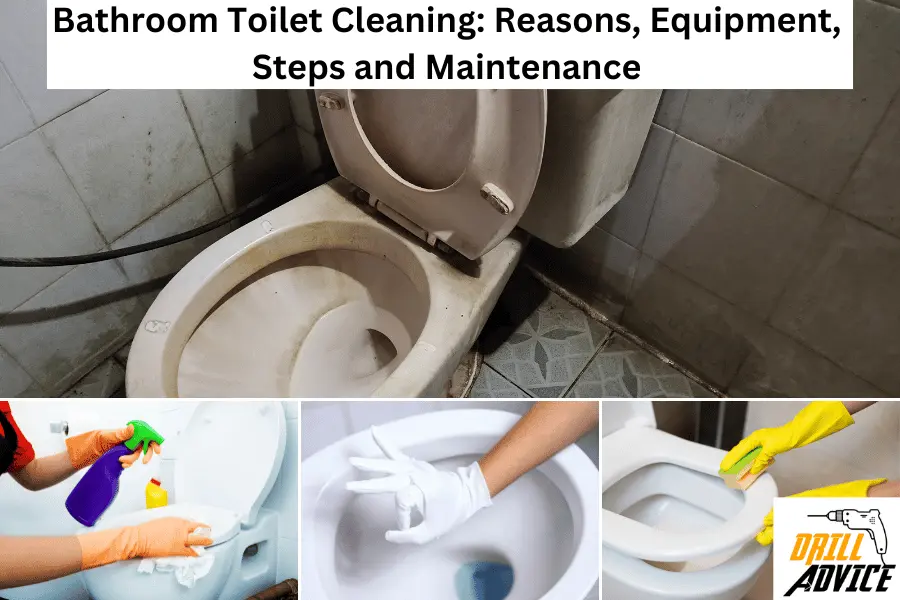
The bathroom toilet cleaning is essential for a healthy and pleasant bathroom. The bathroom toilet should be the most cleaned place in the bathroom. Hence, it should be cleaned regularly. Toilets can be dirt due to these 6 reasons such as hard water stains, fungi and algae, bad smell, soap scum, mineral deposit dust and debris.
Dirt toilets can be cleaned by using commercial products such as bleach-based products, gel-based products, and toilet bombs. Naturally, you can use vinegar and baking soda. For higher technical cleaning, you can use UV light also.
You can clean the toilet by following the below 6 steps. In the first step, you should prepare the toilet area for cleaning, then apply the cleaner, then scrub the toilet bowl. Next, you can flush the dirt in the toilet. After cleaning the inside, you can clean the toilet surface by using another bush. After disposing of and washing the toilet you can finish the toilet cleaning successfully.
When you clean the toilet, do not use any abrasive cleaners, metal brushes, and oil-based soaps. These cleaners can scratch the toilet surface and it will increase the germ growth inside the toilet. You can maintain the toilet by cleaning weekly, checking for leaks, sing mild cleaners, and keeping the lid close long time without any problems.
What Can Dirt the Bathroom Toilet?
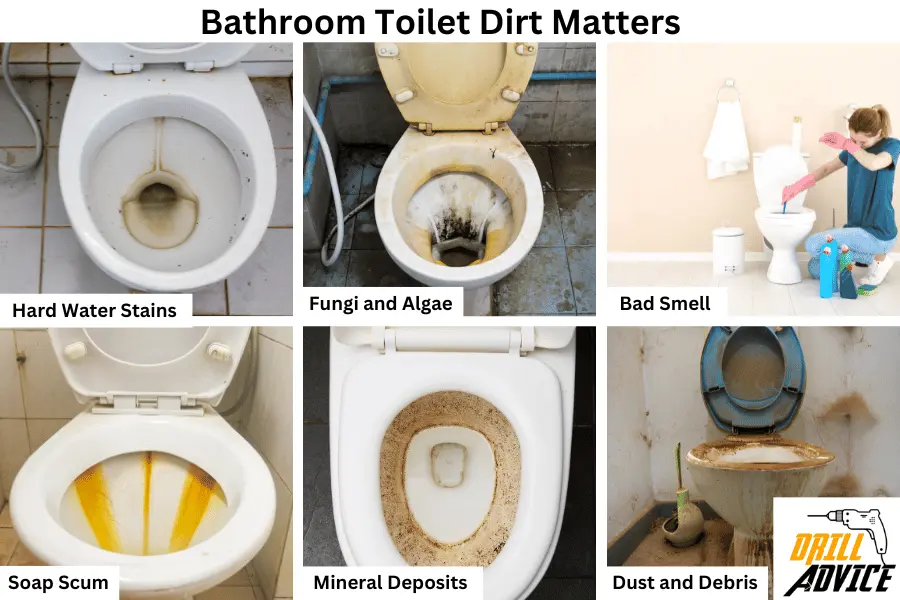
- Hard Water Stains – Bathroom toilets can be dirty due to hard water containing minerals like calcium and magnesium. These can cling to the bowl, leaving unsightly rings or streaks close to the water seal area. Stain marks will add a brown color to the fixture, and it will increase the dirtiness of the toilet.
- Fungi and Algae – Fungus and algae will grow If there is any water leaking in the water supply unit.
- Bad Smell – When the toilet is continuously used without proper cleaning bad smell will occur. This will increase the unpleasantness to the user.
- Soap Scum – When you clean your toilet with soap-based cleaners, soap can leave a film over time, which attracts more dirt.
- Mineral Deposits – Sediments from tap water, such as iron or copper, can stain your toilet bowl, giving it an unpleasant rust-colored tinge.
- Dust and Debris – Dust and other debris can accumulate on the toilet lid. This will give an unpleasant and untidy look to the toilet.
What You Should Use for Bathroom Toilet Cleaning?
- Bleach-Based Toilet Cleaners: Bleach-based toilet cleaners kill almost every germ in its path and leave your toilet sparkling. However, use it carefully because excessive bleach can damage your toilet’s septic system.
- Gel-Based Cleaners: Gel-based toilet cleaners come with an applicator. It helps you to target grime directly. They stick well, making it easier for the product to work its magic. Just apply, let sit, and scrub away.
- Toilet Bombs: Similar to bath bombs, but for your toilet. Drop one in, let it fizz and scrub the bowl with a toilet brush. These bombs often contain natural ingredients, making them a more eco-friendly option.
- Vinegar: Pour undiluted vinegar into the toilet bowl, let it sit for a few minutes, then scrub. Vinegar works wonders for calcium and lime deposits.
- Baking Soda: This pantry staple also works as a great toilet cleaner. Sprinkle it into the bowl, let it sit, and then scrub. For better results, add vinegar to create a fizzing cleaning action.
- UV Light: Some new toilet models come with a UV light feature that claims to sanitize your toilet bowl. While it might sound futuristic, the jury’s still out on its effectiveness.
Read More About
- Bathroom Sink Cleaning: Reasons, Equipment, Steps and Maintenence
- Bathroom Floor Cleaning: Reasons, Effects, Cleaners, Steps, and Maintenance
- Bathtub Cleaning: Reasons, Equipment, Steps and Maintenance
How to Clean the Toilet?
You can clean the bathroom toilet by following the below steps.
Step 01 – Prepare the Toilet Area For Cleaning
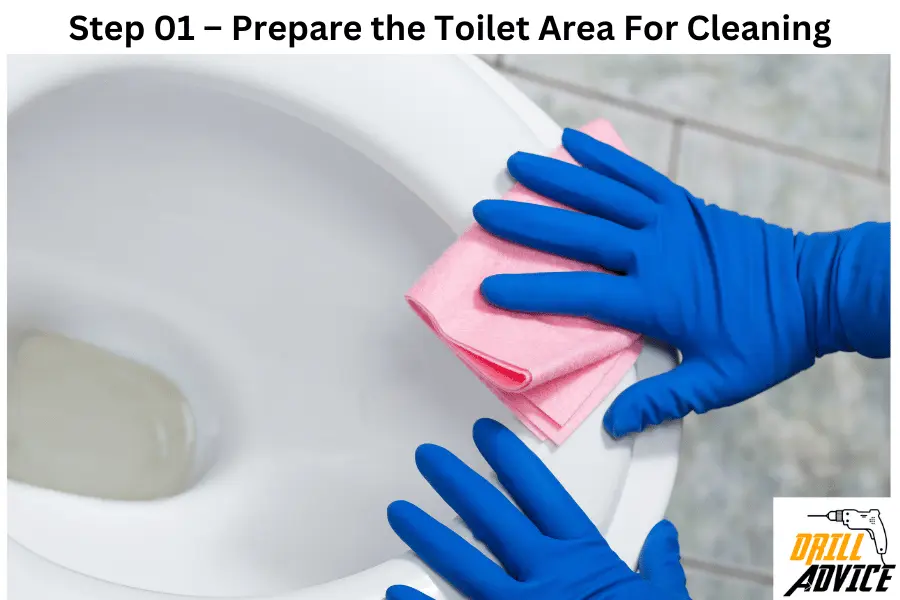
First you should prepare the toilet area for cleaning. Remove any personal items from the toilet tank or nearby surfaces to prevent them from getting wet or damaged during the cleaning process. Then wear the face masks and gloves if you need. Open a window or turn on the exhaust fan to minimize exposure to fumes.
Step 02 – Apply Toilet Bowl Cleaner

Then, apply the toilet bowl cleaner inside the toilet bowl. You should apply the cleaner on the surface areas. Then, remain 10-15 minutes for the best result. During this period, do not wash or pour water on the application areas. During this time, dirt and stains will break down, and bacteria will be destroyed.
Step 03 – Scrub the Toilet Bowl
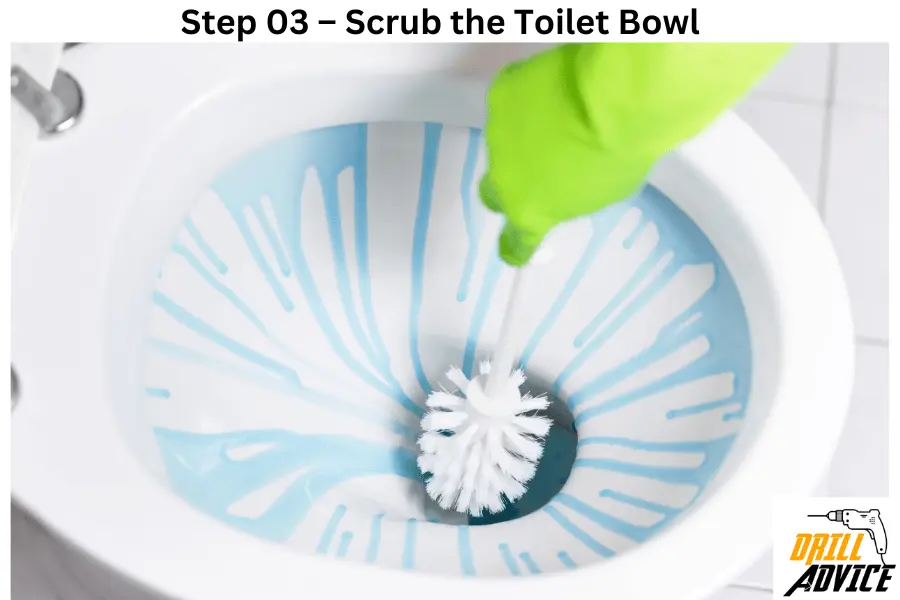
Using a toilet brush, scrub the inside of the toilet bowl thoroughly. Start from the top and work your way down, ensuring you reach all the nooks and crannies. Pay extra attention to areas with stains or mineral deposits. Use a back-and-forth motion and apply some pressure to remove any built-up grime. Make sure to scrub below the waterline as well. I would recommend to use a face mask in this step.
Step 04 – Flush the Dirt in the Toilet
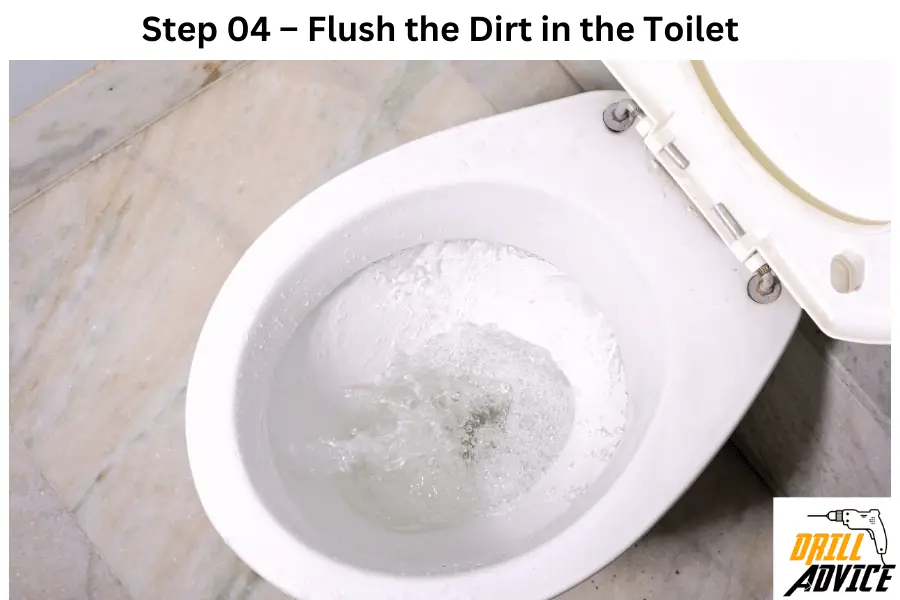
After scrubbing, flush the toilet to rinse away the cleaner and any loosened dirt. This step helps to remove any residue and leaves the bowl fresh and clean. If necessary, repeat the scrubbing and flushing process for particularly stubborn stains or buildup.
Step 05 – Clean the Exterior Surfaces
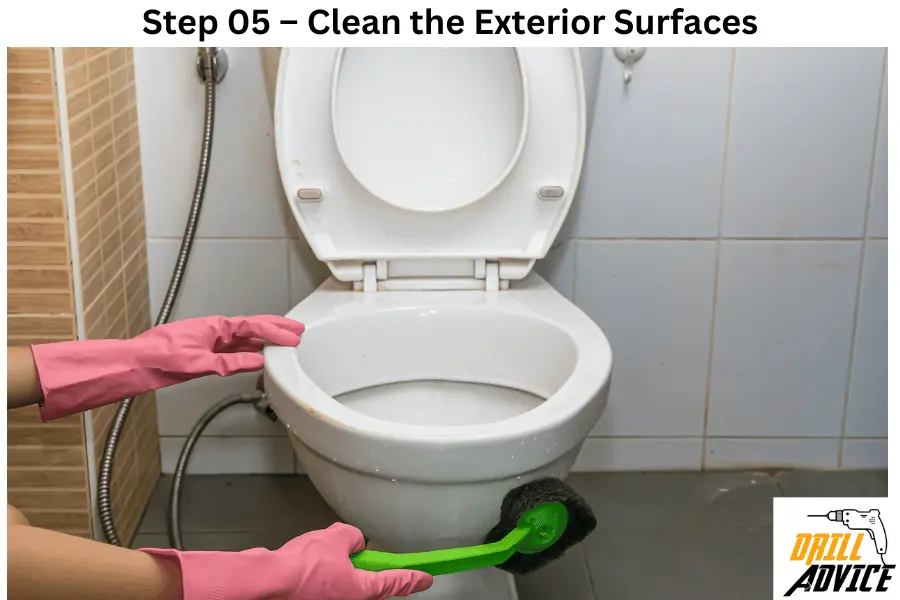
Once the inside of the toilet bowl is clean, focus on the exterior surfaces using another brush. Do not use a bowl cleaning brush for the outside cleaning. Then, use anti-bacterial wipes or spray to disinfect the handle, seat, and lid. Wipe down these areas thoroughly to remove any bacteria or germs. Pay attention to any crevices or hinges that may require extra cleaning.
Step 06 – Finish Toilet Cleaning and Dispose

After cleaning, discard any used wipes or dispose of any cleaning materials properly. Rinse out your toilet brushes and let them dry before storing them. Finally, wash your hands thoroughly to maintain personal hygiene.
What You Should Not Use for Bathroom Toilet Cleaning?
You should not use abrasive cleaners, metal brushes, ammonia-based cleaners and oil-based soaps to clean the bathroom toilet. Using these bathroom surfaces will be scratched and it will improve the germ growth in the toilet.
- Abrasive Cleaners – Abrasive cleaners can scratch the toilet surface. Scratches provide hiding spots for bacteria and make future cleaning more challenging.
- Ammonia-Based Cleaners – Ammonia might be great for cleaning windows, but keep it away from your toilet. Mixing ammonia with bleach can produce hazardous fumes.
- Metal Brushes – Metal brushes can scratch the toilet surface. These scratched areas will be more challenging for future cleanings.
- Oil-Based Soaps – Oil-based soap can improve germ growth in the toilet.
How to Maintain the Bathroom Toilet Properly?
Routine maintenance can go a long way in keeping your toilet clean and functional. Here are steps to ensure you’re on the right track:
- Daily Swish – Make it a habit to swish the toilet bowl with a toilet brush daily. This prevents residue build-up and makes deep cleaning easier.
- Clean the Toilet Weekly – Use a toilet-specific cleaner and give your toilet a thorough scrub once a week. This keeps bacteria and stains at bay. Don’t forget to wipe the exterior too!
- Check for Leaks – Regularly inspect the base and the water supply line for leaks. A leaking toilet wastes water and can lead to long-term damage.
- Use Mild Cleaners for Regular Use – For routine cleaning, stick to mild cleaners to prevent damage to the toilet’s surface and its internal mechanisms.
- Keep the Lid Closed – Always flush with the lid closed to prevent germ-laden water droplets from spreading in the bathroom.
